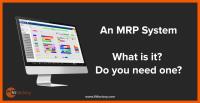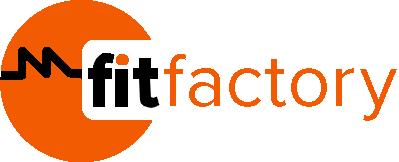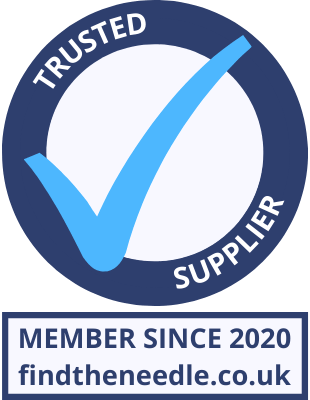 Add My Company
Add My Company
Sign In

What is an MRP System?
Manufacturing can be extremely complex. Even to onlookers from outside the industry, it will come as no surprise that the production and manufacture of goods involves a lot of moving parts. However, one thing that may be less obvious is the amount of paperwork involved. From purchase orders, Bills-of-Materials, Certificates of Conformity and more (all of which need to be monitored and processed), documenting the paperwork can be as big of a job as manufacturing parts! Fortunately, this is where an MRP system comes in.
A Materials Requirements Planning (MRP) system schedules, orders and organises the activities of a manufacturing company. It uses the information that’s in the system to generate the requirements of materials. Then, it maintains records throughout the manufacturing process to minimise data entry and potential mistakes.
They can be incredibly useful in saving time, money and effort on what many would consider “the boring bit” of the job!
While a Manufacturing Execution System (MES) can automate plant operations, an MRP system automates the exchange of data and paperwork throughout the manufacturing process.
Who uses the MRP System?
MRP systems are driven by data and information. Therefore, they often require a lot of manual input from a wide range of people within a company.
The sales team must ensure that orders are entered. This creates a requirement for a finished product.
The production team review inventory levels and sales requirements before supplying the manufacturers with work orders.
Purchasing staff review stock levels, forecasts and sales orders so that they can raise purchase orders in order to satisfy demand for any materials required.
Personnel responsible for receiving goods must ensure that materials are added to inventory so that they are available to be used in manufacturing.
Staff in the stockroom must maintain accuracy of the inventory so that up-to-date availability of materials can be seen by purchasing and production teams.
Shipping personnel are required to satisfy the sales order demands when shipping completed orders.
This may sound like a large amount of work, but in comparison to many business solutions that include duplicated work and overly manual processes, there are a number of advantages to using MRP systems.
The advantages of using an MRP System
Simplified Inventory Management
Firstly, an MRP system can dramatically simplify Inventory Management. By logging all inventory upon arrival, the system automatically creates it in the system to re-use later. This is further enhanced when paired with Shop Floor Data Capture or bar-code scanning. By scanning a part just once, you can capture all of the supplier information, specifications, and drawing instructions. Then, every time you use this part, or move this part from it’s location, all that information is recorded, logged and stored safely with full traceability of any changes. So you only have to enter that information once.
You can even just scan the item when you’re moving it, and scan the new location or machine it’s being used on to keep a log of that change.
Depending on your business operations, your MRP system could also hold information like expiry dates, chemical composition and where it came from.
Standardised Business Processes
Secondly, having an MRP system can help standardise business processes to produce consistent quality output. If you have a senior engineer and a junior engineer left to their own devices, there’s a good chance they’ll work differently, and produce work to different quality standards.
However, with an MRP system, you will define the best practice processes once, to be rolled out to the whole team. Ensuring that everyone works to the same standards. Furthermore, with standardised templates, and repeat jobs auto-generating data for production processes, you will ensure that paperwork is standardised, jobs are well documented, and you have complete audit traceability.
Reduction in Non-Productive Time
The reduction of entering data not only improves data integrity to reduce mistakes, but it also means that resources will be deployed more efficiently. Instead of spending their time inputting data, operators will be able to spend more time completing tasks and being more productive.
Measuring and Improving Performance
Having all this information in one place along with traceability of any activities, you have full visibility of operational performance. Whether you want to learn which customers spend the most with you, which jobs take the longest, or your monthly OTIF performance, having all of the information together is the first step to being able to understand how your business is performing. And an MRP system gives you that information.
Streamlined quality compliance
With quality and compliance standards becoming more rigorous, while entirely necessary for improve product quality and safety, do create an onerous amount of work for your operators. An MRP system can automatically generate a lot of this paperwork based on the information entered at the source, and by tracking the activities conducted by your team. This often saves hours in time you would otherwise need to spend completing the paperwork after each operation or job.
MRP in the factory
There are some disadvantages too though
Whilst MRP can be hugely to your business, there are some potential downsides, or reasons why it might not be right solution for your business.
Cost of change
Implementing any new system that controls your core processes will have a big impact on your business; costing time and money to set up, disrupting your existing processes, and potentially changing the roles of people in your business.
This is true whether you’re looking at a Production Control System, MRP or ERP system, and it’s not to be overlooked. There are a number of foundations to have in place when implementing an business technology, including ensuring you have a clear vision and strategy for the business that your team have bought into and believe in. For more information about what to have in place, we have a blog on this specific topic.
How to start your digital transformation in manufacturing
Generic One-size-fits-all
MRP systems are typically standardised, and designed to fit repeatable manufacturing operations. This makes them cheaper than having a bespoke system. However, it often means, in more niche manufacturing companies or if you do high complexity low volume jobs, that spreadsheets might be needed to supplement inefficiencies in the system; which prevents optimal return on investment. In some cases, you’ll be able to request bespoke changes, but these will increase the cost, and may also extend the implementation process.
As Fitfactory, we offer a range of systems tailored to niche industries, including Manufacturing, Precision Machining and Treatments, so you have the best of both worlds.
Training & Implementation Costs
Additionally, MRP software can be fairly complex, so your team will require training to effectively use the system, and they may be resistant to the change in processes. If some staff are unwilling to change, or lack sufficient skills to learn the new system, you could be caught in-between paper based and digital systems. This will cause greater issues. So, it requires strong leadership, and management to ensure the implementation’s success.
A good provider of MRP systems should be on hand to guide you through this change process and offer you best practices on how to bring your team along. (Don’t worry, we’ve got you!)
As an additional note, our solutions have no hidden training or implementation costs on top of the software costs, so there’ll be no nasty surprises!
Migrating Systems
Finally, if you have an existing ERP system in place already, and intend to implement an MRP system to control the production processes, then integration can be an issue. You must consider the possibility of linking the production data to your existing databases, and vice versa.
Additionally, if you have an existing MRP system and need to migrate from an existing system to a new one, there can be complexities with migrating data across
This can be potentially quite tricky, but it should be a standard practice for your software providers to be able to guide you through this process. If you do need additional help, you may require a 3rd Party IT partner to help manage your IT processes.
Is an MRP System right for you?
The main issue many companies are hoping to solve when looking into software such as MRP systems is that your orderbook is growing, but you maybe can’t invest further in staff or people. You need to fulfil what the orders you have more efficiently, or want to find ways to continue to grow it without further investment in staff or plant.
Data management might be an issue too. Post-its, excel spreadsheets, paper forms, this lack of consolidation results in less accurate information, and reduced availability of data. As a result of the inaccurate data, forecasts can be incorrect, resulting in overstocking issues and leaving a gross excess of materials.
A good MRP system from a reputable provider can solve these issues and provider your business with a platform for future growth and success.
However, if you run highly complex job processes, a standardised MRP system may not be wholly beneficial, as you’ll likely need to supplement it with external unconnected sources.
Also, if you’re in quite a large company with multiple sites, you may require something a bit bigger, and an ERP system may be best.
Fitfactory MRP Systems
At Fitfactory, we’ve been providing MRP systems to customers for over 25 years, with over 300 active users of our systems.
We’ve helped start-ups looking for their first system, up to companies with over 150 employees, and everything in between. We strive to ensure our software is easy to use and learn, and configured to your industry, to minimise any potential problems you may have.
Often an MRP system is just the beginning, and we help our customers grow over time, working with many of our customers for over 15 years.
Read more about our Fit for Manufacturing solution.
If you’d like further advice on purchasing an MRP system, please get in touch, and we’ll be happy to help you on your journey.
For more information on An MRP System – What is it? And do you need one? talk to Fitfactory Technology Ltd
Enquire Now
List your company on FindTheNeedle.

